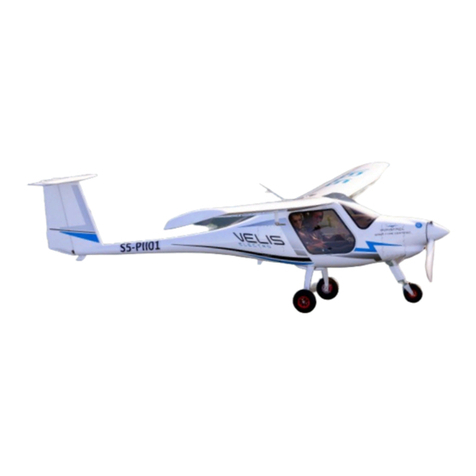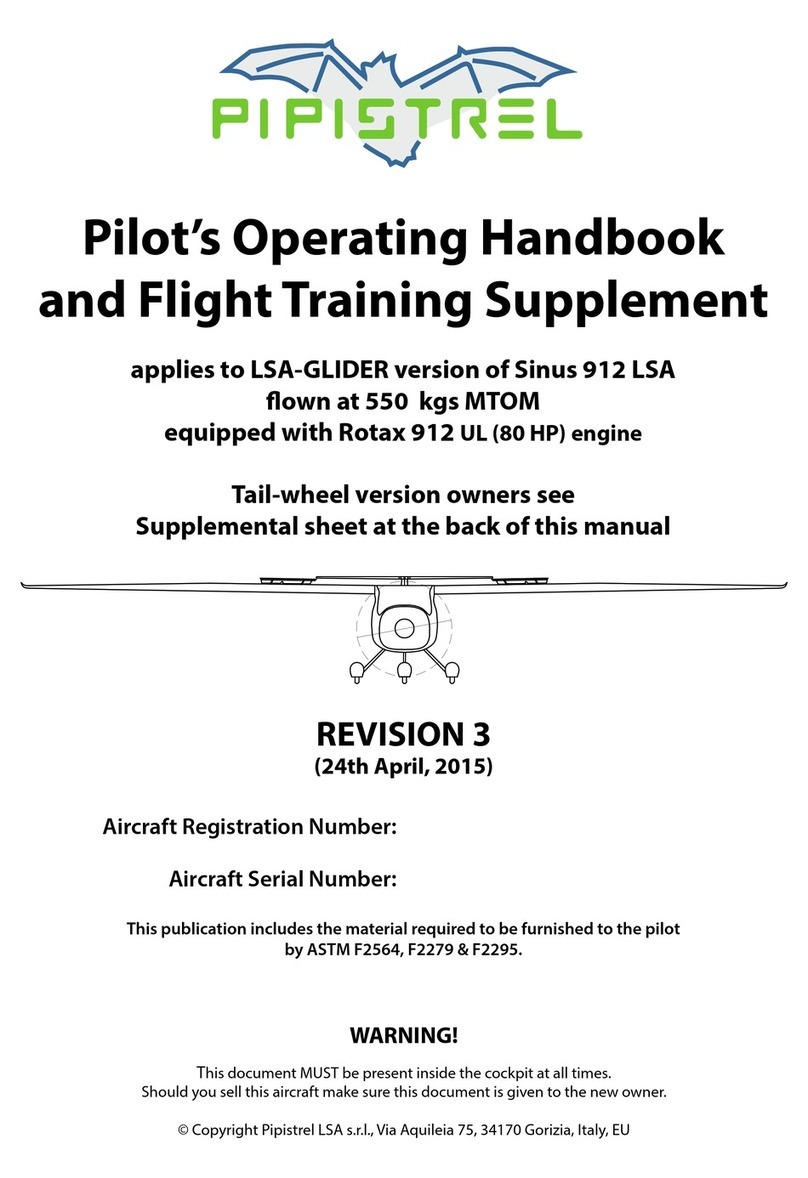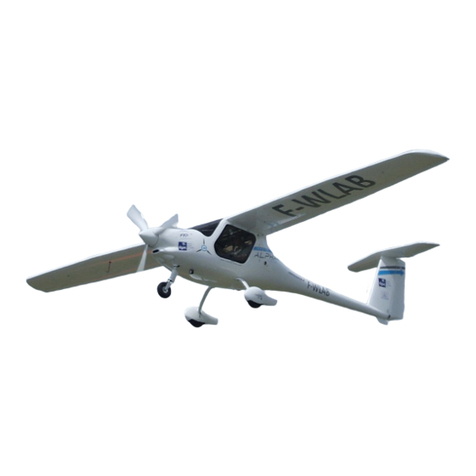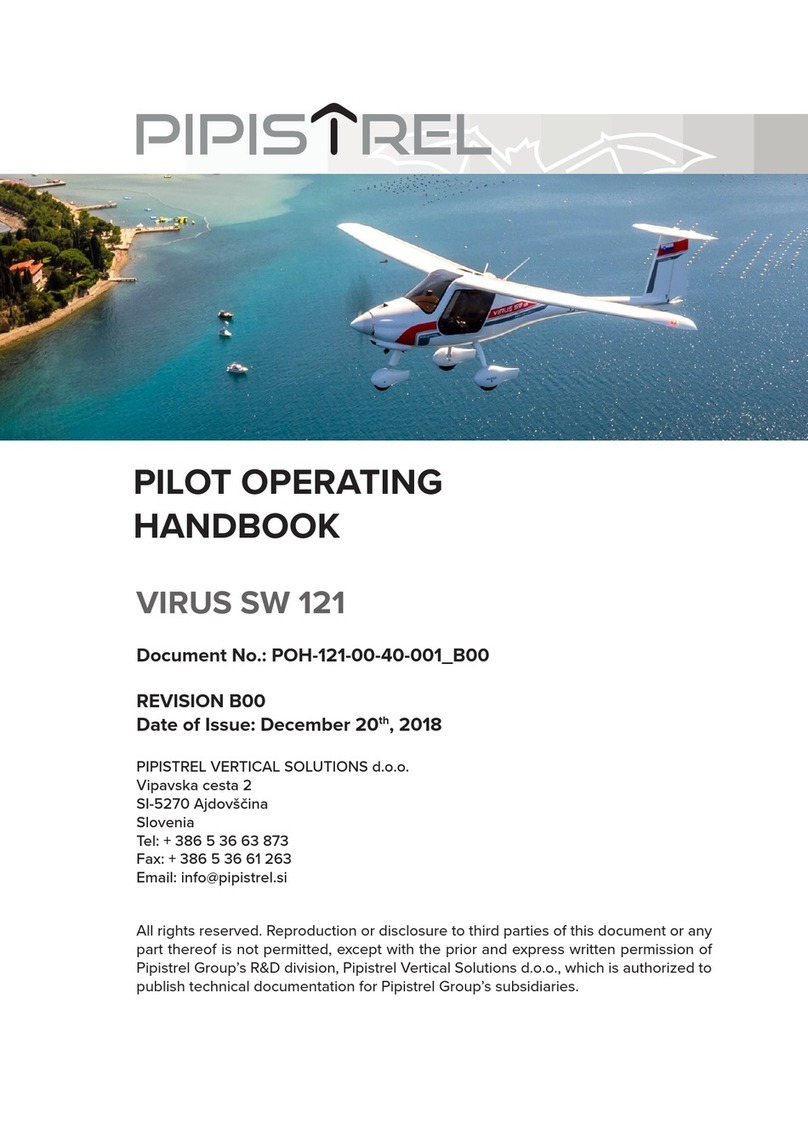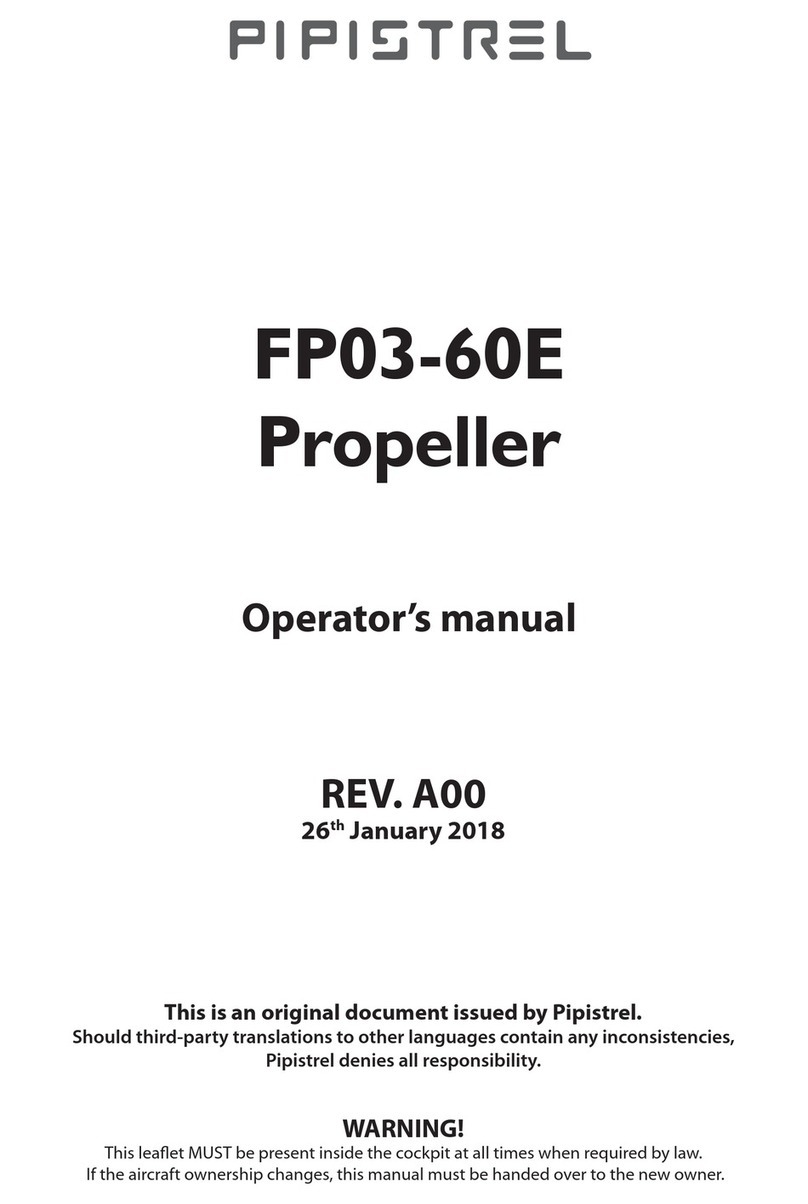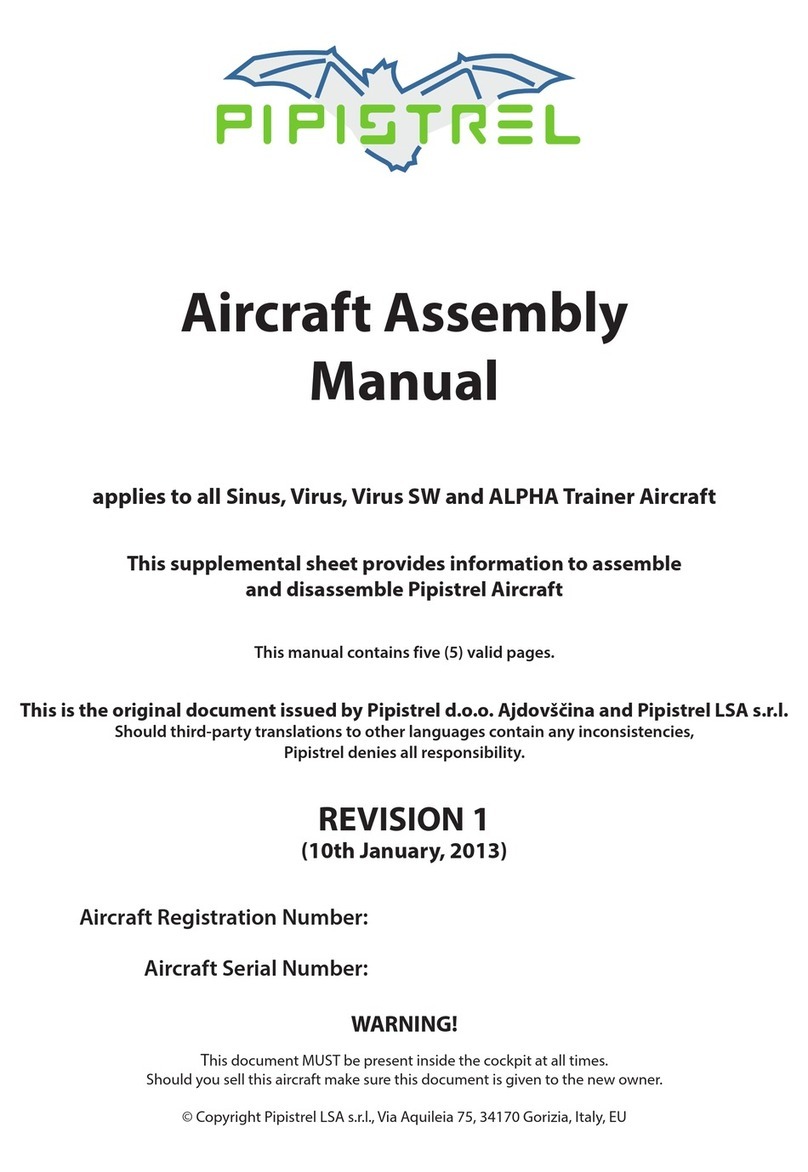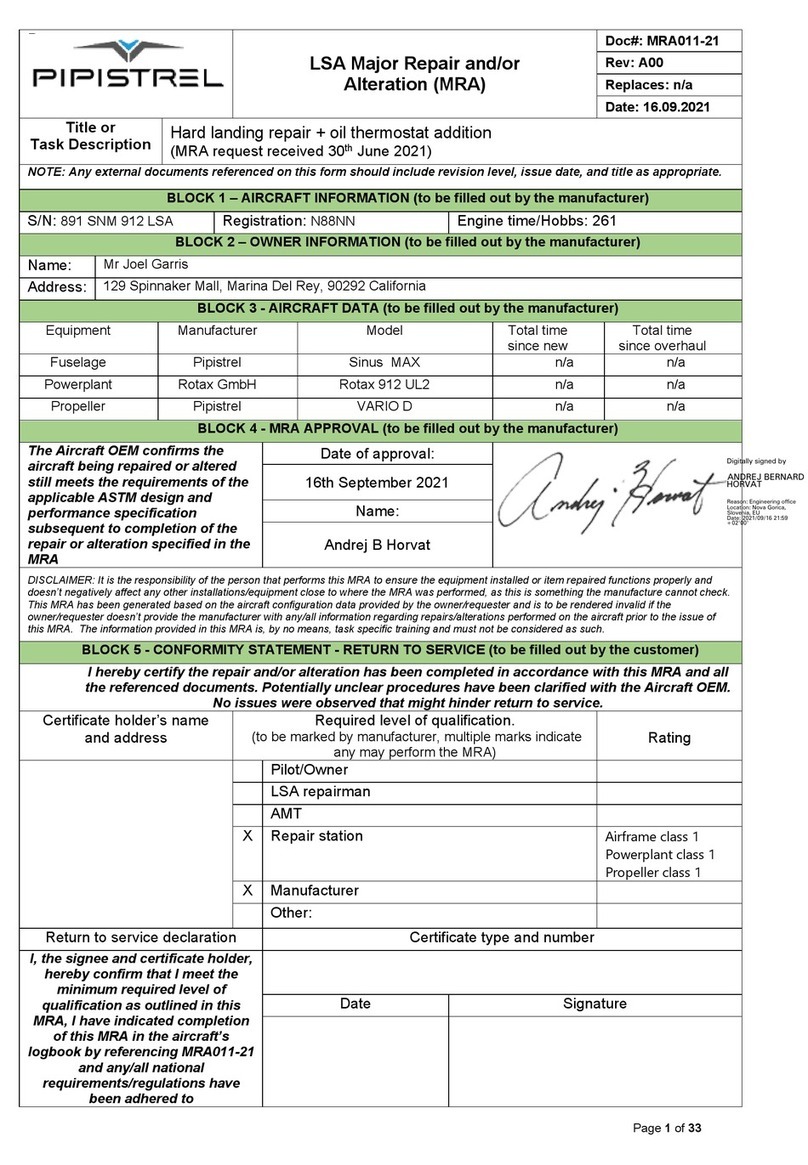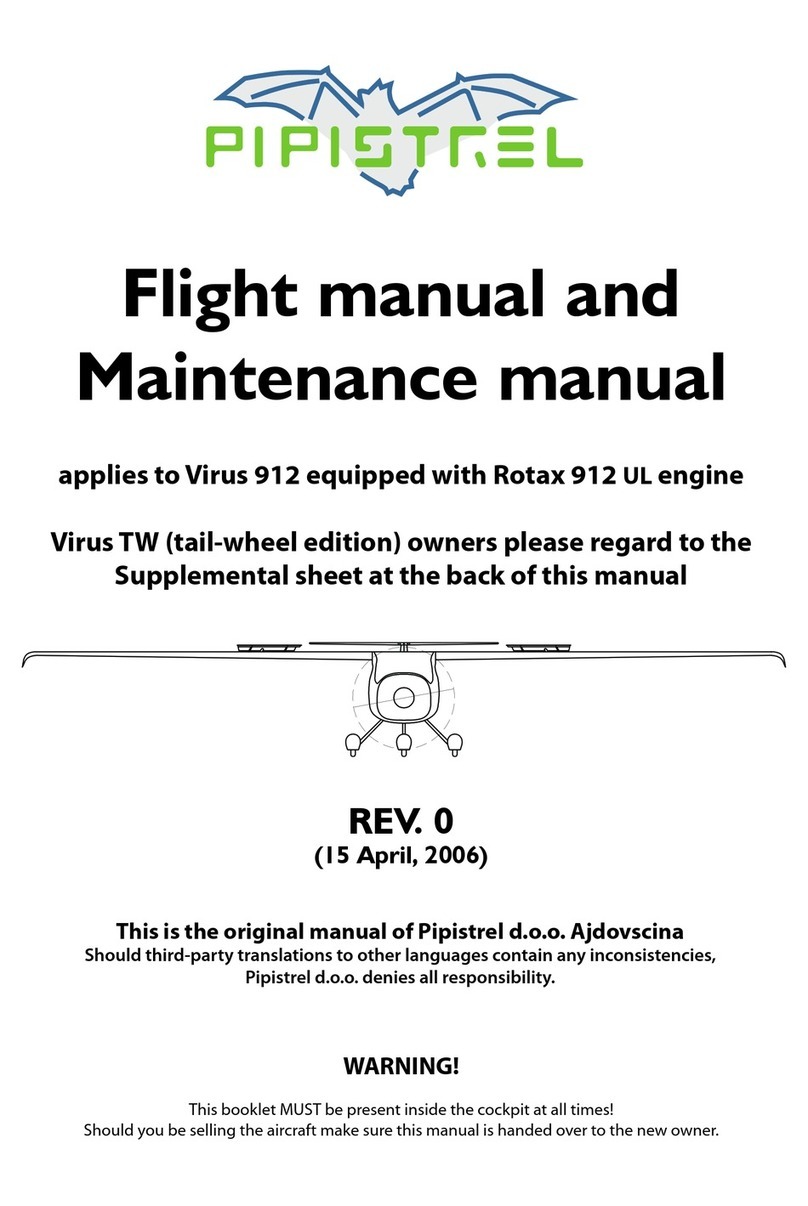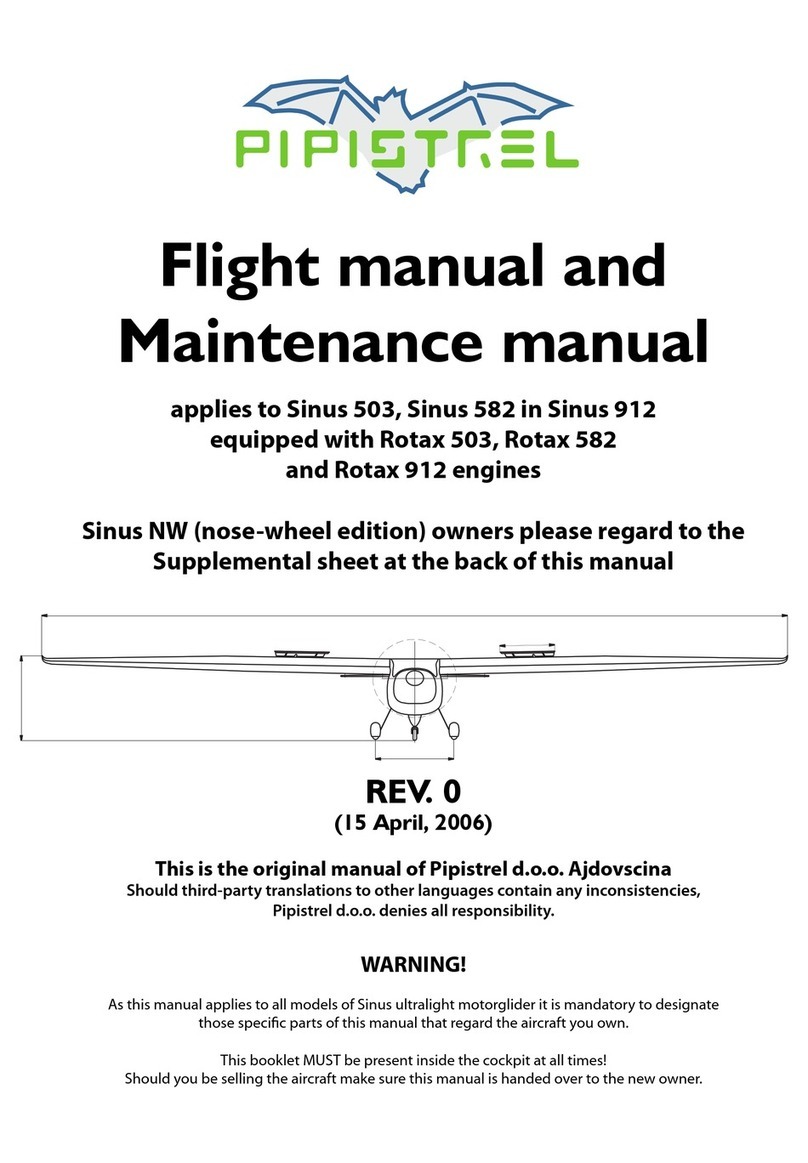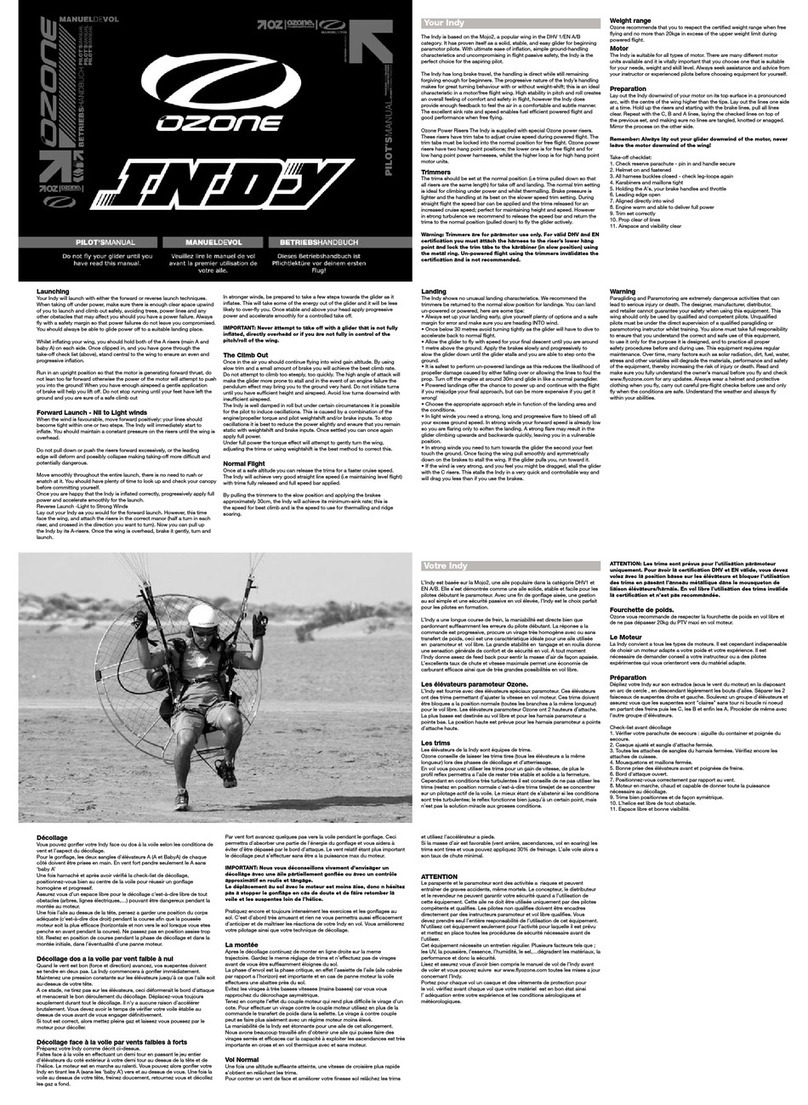
AIRCRAFT OPERATING INSTRUCTIONS –VIRUS 912 S-LSA GLIDER
Page 5
1. PURPOSE. To provide a standard instruction for the safe and efficient use of this Pipistrel Aircraft. By
combining a comprehensive instruction which describes Systems, Performance, Procedures, and
Limitations, this Instruction will provide the owner/pilot with the knowledge required to safely share the
passion of flight for many years.
This aircraft was built In accordance with the specifications of ASTMs F 2564, 2279, 2295, 2316, and 2483.
Additionally, we have used a power plant which complies with ASTM F 2339. Every Pipistrel LSA Glider is
accompanied by an Aircraft Operating Instruction (AOI). The content and format herewith is defined by
F 2564. Additions to F 2564 standards format are included wherever necessary to adequately describe
the safe operation of the aircraft. All flight speeds are given in terms of calibrated airspeeds (CAS),
unless otherwise noted. All specifications and limitations are determined from the specification F 2564.
Capacities, Dimensions, and Performance Measures are framed in terms commonly used in the American
Market. Although US temperatures are normally measured in degrees Fahrenheit, this instruction will
use degrees Centigrade, now commonly used in the US, to avoid confusion with instruments that display
temperatures in degrees Celsius/Centigrade.
2. GENERAL INFORMATION.
2.1 Read this before your first flight! Every pilot must understand the capabilities and
limitations of this light sport glider. The AOI must be read thoroughly. Pay attention to the pre-
flight and daily checks. Maintenance instructions for the aircraft are given in a separate
Maintenance Manual. For maintenance of the Rotax® engine, emergency parachute system and
other installed equipment refer to the original manufacturer´s manuals. Flying the Virus, like any
other motor glider, must include planning for a safe landing due to the possible loss of the engine
power at any time.
This Pipistrel Virus is designed for and capable of day and night VFR flight. Because of its cruising
speed and range, flight into vastly different weather patterns and meteorological conditions can
occur. The entry into bad weather with IFR conditions with VFR aircraft is extremely dangerous.
As the owner or operator of an aircraft you are responsible for the safety of your passenger and
yourself. Do not attempt to operate your Virus in any manner that would endanger the aircraft,
the occupants, or persons on ground.
2.2 Manufacturer.
PIPISTREL LSA s.r.l.
Via Aquileia 75
34170 Gorizia, Italy, EU
2.3 Warnings, Cautions, and Notes.
WARNING!
Disregarding the following instructions leads to severe deterioration of flight safety and
hazardous situations, including such resulting in injury and loss of life.
CAUTION!
Disregarding the following instructions leads to serious deterioration of flight safety.




